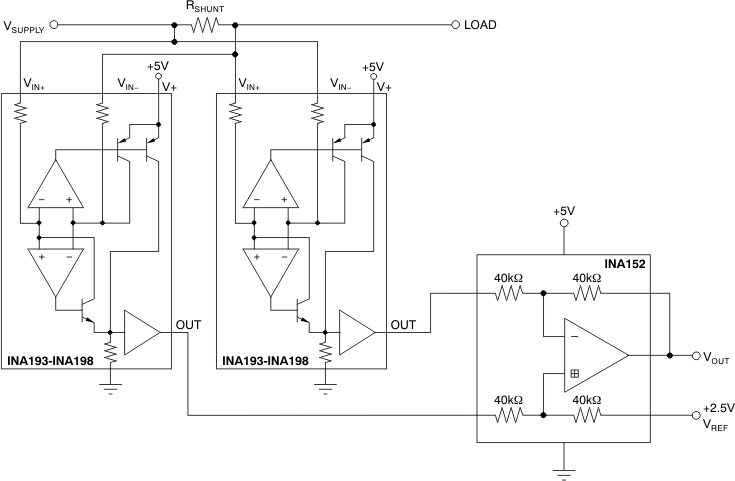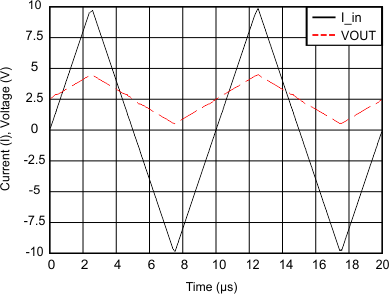ZHCSFN8G May 2004 – January 2015 INA193 , INA194 , INA195 , INA196 , INA197 , INA198
PRODUCTION DATA.
- 1 特性
- 2 应用
- 3 说明
- 4 修订历史记录
- 5 Device Comparison Table
- 6 Pin Configuration and Functions
- 7 Specifications
- 8 Detailed Description
- 9 Application and Implementation
- 10Power Supply Recommendations
- 11Layout
- 12器件和文档支持
- 13机械、封装和可订购信息
9 Application and Implementation
NOTE
Information in the following applications sections is not part of the TI component specification, and TI does not warrant its accuracy or completeness. TI’s customers are responsible for determining suitability of components for their purposes. Customers should validate and test their design implementation to confirm system functionality.
9.1 Application Information
The INA193-INA198 devices measure the voltage developed across a current-sensing resistor when current passes through it. The ability to have shunt common-mode voltages from −16-V to +80-V drive and control the output signal with Vs offers multiple configurations, as discussed throughout this section.
9.2 Typical Application
The device is a unidirectional, current-sense amplifier capable of measuring currents through a resistive shunt with shunt common-mode voltages from −16 V to 80 V. Two devices can be configured for bidirectional monitoring and is common in applications that include charging and discharging operations where the current flow-through resistor can change directions.
 Figure 29. Bi-Directional Current Monitoring
Figure 29. Bi-Directional Current Monitoring
9.2.1 Design Requirements
Vsupply is set to 12 V, Vref at 2.5 V and a 10-mΩ shunt. The accuracy of the current will typically be less than 0.5% for current greater than ±2 A. For current lower than ±2 A, the accuracy will vary; use the Device Functional Modes section for accuracy considerations.
9.2.2 Detailed Design Procedure
The ability to measure this current flowing in both directions is enabled by adding a unity gain amplifier with a VREF, as shown in Figure 29. The output then responds by increasing above VREF for positive differential signals (relative to the IN – pin) and responds by decreasing below VREF for negative differential signals. This reference voltage applied to the REF pin can be set anywhere between 0 V to V+. For bidirectional applications, VREF is typically set at mid- scale for equal signal range in both current directions. In some cases, however, VREF is set at a voltage other than mid-scale when the bidirectional current and corresponding output signal do not need to be symmetrical.
9.2.3 Application Curve
An example output response of a bidirectional configuration is shown in Figure 30. With the REF pin connected to a reference voltage, 2.5 V in this case, the output voltage is biased upwards by this reference level. The output rises above the reference voltage for positive differential input signals and falls below the reference voltage for negative differential input signals.
 Figure 30. Output Voltage vs Shunt Input Current
Figure 30. Output Voltage vs Shunt Input Current